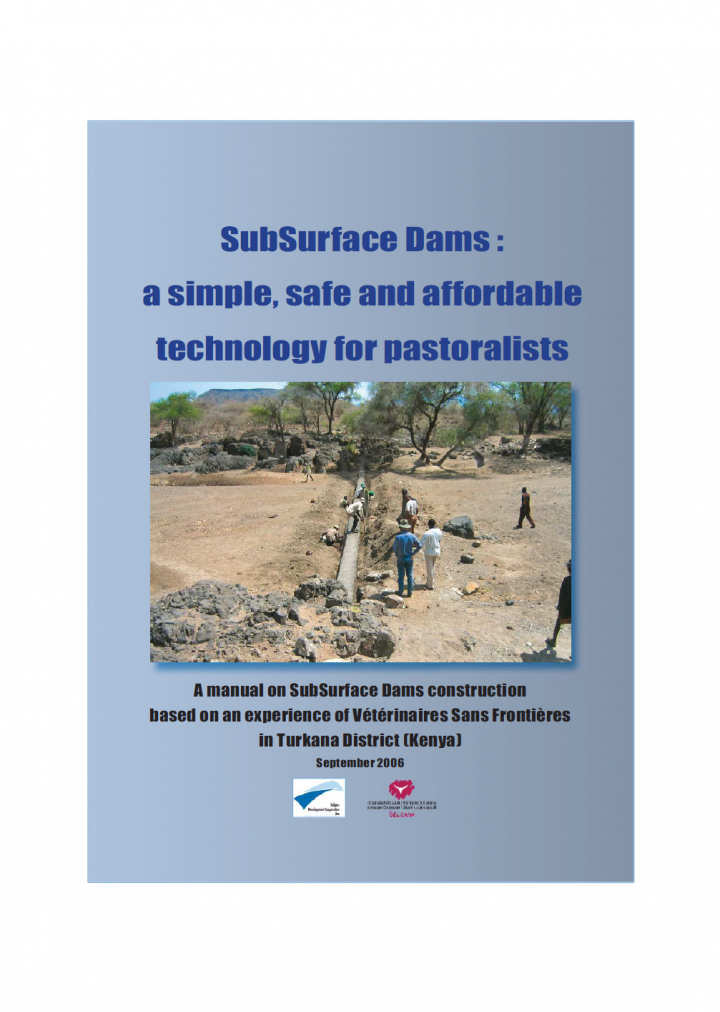SubSurface Dams manual: a simple, safe and affordable technology for pastoralists - based on an experience of Vétérinaires Sans Frontières in Turkana District (Kenya)
VSF-Belgium, TLDP-project (2006)

Published in: 2006
Pages: 51
Publisher:
Belgian Survival Fund
Author:
VSF-Belgium, TLDP-project
Uploaded by:
SuSanA Admin
Partner profile:
common upload
1746 Views
89 Downloads
Soil and water conservation is a high priority in the drier areas of subSaharan Africa. Storage of water from the rainy season to the dry season, or even from wet years to dry years is highly important. Groundwater dams, which store water under the ground, can store sufficient quantities of water for livestock and minor irrigation as well as for domestic use. If sited and built properly, dams can give an appropriate answer to the waterneed. Unfortunately there are also many examples of groundwater dams which have not been successful due to insufficient technical and social assessment and design. Lack of appropriate investigation for identifying suitable sites to construct the underground dyke often leads to subsurface lateral loss of water. For a better livestock health and access to water and dry season grazing lands, the TLDP-project applied the simple, affordable, replicable technology of subsurface dams. By building an underground dam in the bed of a dry river, rain and groundwater is filtered, collected and stored underground. Apart from a technical and social assessment phase, technical and social design of SSD has to be done very carefully. Community participation and awareness
creation (empowerment) are essential to the success of the intervention. This manual builds on the experience with subsurface dams of Vétérinaires sans Frontières in the Turkana-District in the North West of Kenya, explaining all phases from the initial assessment to the design of the dams based on the own lessons
learnt with this specific technique.
Bibliographic information
VSF-Belgium, TLDP-project (2006). SubSurface Dams manual: a simple, safe and affordable technology for pastoralists - based on an experience of Vétérinaires Sans Frontières in Turkana District (Kenya). Belgian Survival Fund
Filter tags
English Guidelines and manuals Politicians and local decision makers Practitioners Sub-Saharan Africa Water (irrigation, process, other)














